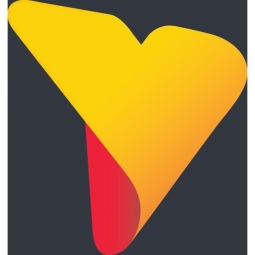Download PDF
Summit Innovations
Technology Category
- Analytics & Modeling - Data-as-a-Service
- Analytics & Modeling - Predictive Analytics
- Functional Applications - Remote Monitoring & Control Systems
Applicable Industries
- Food & Beverage
- Retail
Applicable Functions
- Business Operation
- Quality Assurance
Use Cases
- Predictive Maintenance
- Real-Time Location System (RTLS)
- Remote Asset Management
Services
- System Integration
- Software Design & Engineering Services
The Challenge
Summit Innovations faced the challenge of optimizing drive-through operations for quick service restaurants (QSRs). The primary issues were monitoring vehicle activity, reducing waiting times, and improving speed of service. The existing system needed to provide real-time data and alerts to help management and staff identify and respond to bottlenecks. Additionally, there was a need for a more sophisticated data analysis and reporting system to compare efficiency across different properties and improve overall operational performance.
About The Customer
Summit Innovations is an Australian company that has developed a leading drive-through management system for the quick service restaurant (QSR) industry. Their technology is used by over 95% of new drive-through restaurants in Australia and has been installed in more than 4,000 sites across 20 countries. Their customers include major brands such as Subway, Starbucks, Oporto, Coffee Club, Dunkin Donuts, Red Rooster, Burger King, McDonald’s, KFC, and Hungry Jacks. Summit Innovations aims to enhance the operational performance of drive-through restaurants by providing real-time data and analytics to improve speed of service and reduce waiting times.
The Solution
Summit Innovations implemented a sensor-driven technology that monitors vehicle activity from entry to departure in the drive-through. The data collected is displayed visually on monitors within the restaurant, providing real-time information on speed of service and bottlenecks. The system also offers alerts, management reporting, and enables brands to compare efficiency across different properties. To enhance their offering, Summit integrated the Yellowfin BI platform into their system, creating a new product called Summit Panorama. This integration allowed for more data to be captured, analyzed, and shared across multiple sites, providing mobility to the data and enabling management to receive push notifications and alerts in real-time.
Operational Impact
Quantitative Benefit
Related Case Studies.

Case Study
The Kellogg Company
Kellogg keeps a close eye on its trade spend, analyzing large volumes of data and running complex simulations to predict which promotional activities will be the most effective. Kellogg needed to decrease the trade spend but its traditional relational database on premises could not keep up with the pace of demand.

Case Study
HEINEKEN Uses the Cloud to Reach 10.5 Million Consumers
For 2012 campaign, the Bond promotion, it planned to launch the campaign at the same time everywhere on the planet. That created unprecedented challenges for HEINEKEN—nowhere more so than in its technology operation. The primary digital content for the campaign was a 100-megabyte movie that had to play flawlessly for millions of viewers worldwide. After all, Bond never fails. No one was going to tolerate a technology failure that might bruise his brand.Previously, HEINEKEN had supported digital media at its outsourced datacenter. But that datacenter lacked the computing resources HEINEKEN needed, and building them—especially to support peak traffic that would total millions of simultaneous hits—would have been both time-consuming and expensive. Nor would it have provided the geographic reach that HEINEKEN needed to minimize latency worldwide.

Case Study
Improving Production Line Efficiency with Ethernet Micro RTU Controller
Moxa was asked to provide a connectivity solution for one of the world's leading cosmetics companies. This multinational corporation, with retail presence in 130 countries, 23 global braches, and over 66,000 employees, sought to improve the efficiency of their production process by migrating from manual monitoring to an automatic productivity monitoring system. The production line was being monitored by ABB Real-TPI, a factory information system that offers data collection and analysis to improve plant efficiency. Due to software limitations, the customer needed an OPC server and a corresponding I/O solution to collect data from additional sensor devices for the Real-TPI system. The goal is to enable the factory information system to more thoroughly collect data from every corner of the production line. This will improve its ability to measure Overall Equipment Effectiveness (OEE) and translate into increased production efficiencies. System Requirements • Instant status updates while still consuming minimal bandwidth to relieve strain on limited factory networks • Interoperable with ABB Real-TPI • Small form factor appropriate for deployment where space is scarce • Remote software management and configuration to simplify operations

Case Study
Energy Management System at Sugar Industry
The company wanted to use the information from the system to claim under the renewable energy certificate scheme. The benefit to the company under the renewable energy certificates is Rs 75 million a year. To enable the above, an end-to-end solution for load monitoring, consumption monitoring, online data monitoring, automatic meter data acquisition which can be exported to SAP and other applications is required.

Case Study
How Sirqul’s IoT Platform is Crafting Carrefour’s New In-Store Experiences
Carrefour Taiwan’s goal is to be completely digital by end of 2018. Out-dated manual methods for analysis and assumptions limited Carrefour’s ability to change the customer experience and were void of real-time decision-making capabilities. Rather than relying solely on sales data, assumptions, and disparate systems, Carrefour Taiwan’s CEO led an initiative to find a connected IoT solution that could give the team the ability to make real-time changes and more informed decisions. Prior to implementing, Carrefour struggled to address their conversion rates and did not have the proper insights into the customer decision-making process nor how to make an immediate impact without losing customer confidence.






